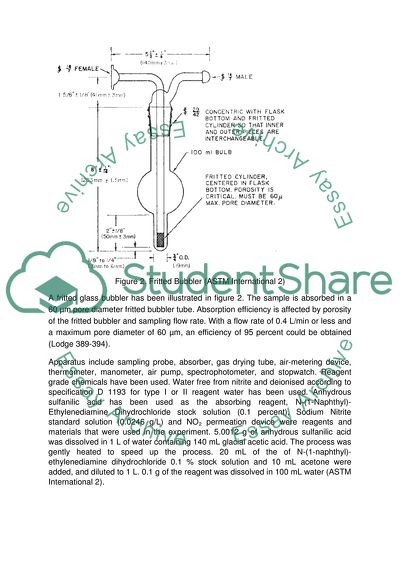Cite this document
(“Determination of nitrogen dioxide content of the atmosphere Lab Report”, n.d.)
Determination of nitrogen dioxide content of the atmosphere Lab Report. Retrieved from https://studentshare.org/chemistry/1555374-standart-test-method-for-nitrogen-dioxide-content-of-the-atmosphere-griess-saltman-reaction
Determination of nitrogen dioxide content of the atmosphere Lab Report. Retrieved from https://studentshare.org/chemistry/1555374-standart-test-method-for-nitrogen-dioxide-content-of-the-atmosphere-griess-saltman-reaction
(Determination of Nitrogen Dioxide Content of the Atmosphere Lab Report)
Determination of Nitrogen Dioxide Content of the Atmosphere Lab Report. https://studentshare.org/chemistry/1555374-standart-test-method-for-nitrogen-dioxide-content-of-the-atmosphere-griess-saltman-reaction.
Determination of Nitrogen Dioxide Content of the Atmosphere Lab Report. https://studentshare.org/chemistry/1555374-standart-test-method-for-nitrogen-dioxide-content-of-the-atmosphere-griess-saltman-reaction.
“Determination of Nitrogen Dioxide Content of the Atmosphere Lab Report”, n.d. https://studentshare.org/chemistry/1555374-standart-test-method-for-nitrogen-dioxide-content-of-the-atmosphere-griess-saltman-reaction.


